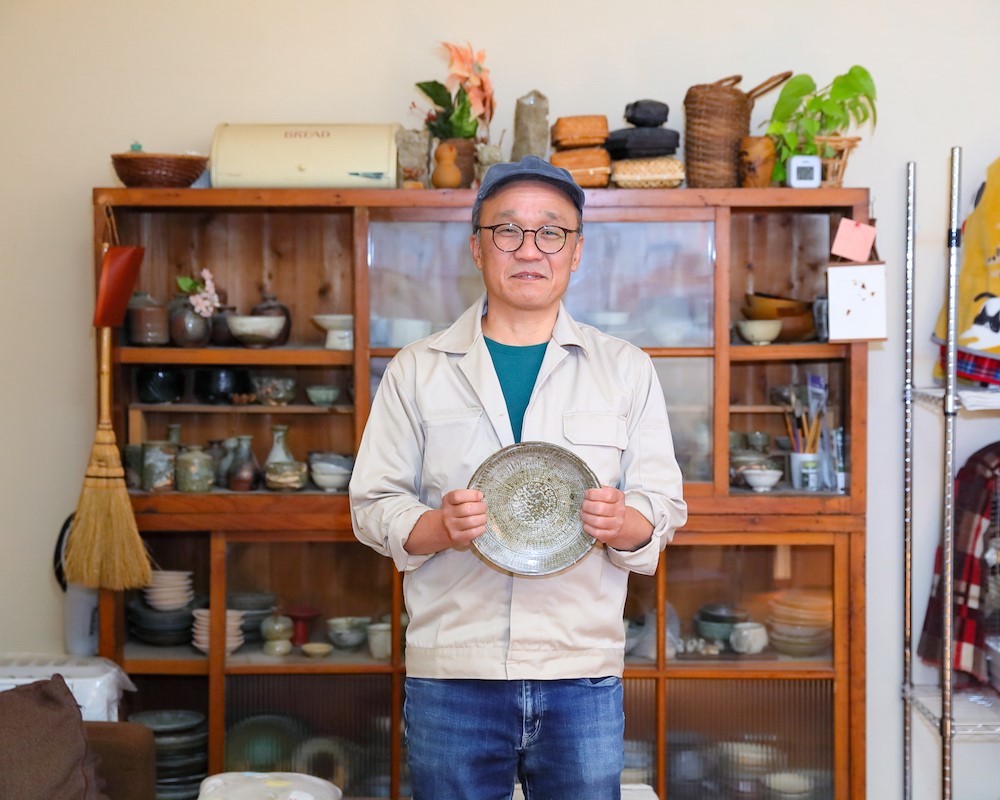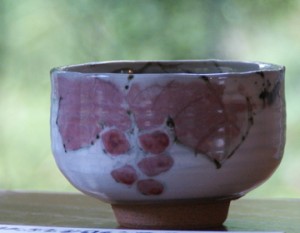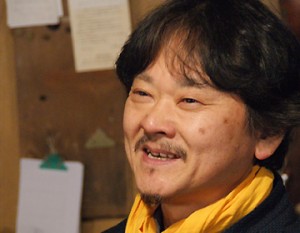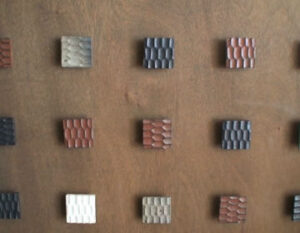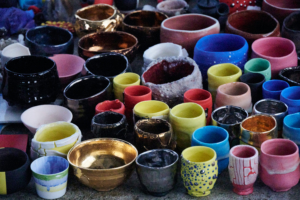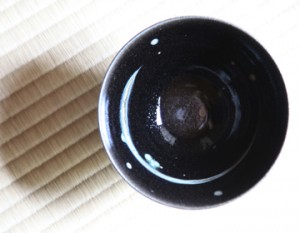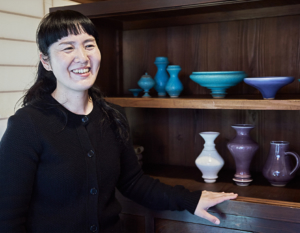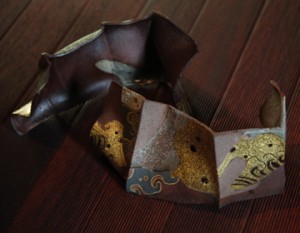Shigeru Inoue, who maintains a studio in his home in central Aichi Prefecture, is a potter who uses raw clay mixed with sand instead of refined clay to create vessels full of the gentleness of the earth. He is a self-taught potter who does not study under a potter, but rather explores clay, glaze, and firing methods to create his vessels by himself. Mr. Inoue says of his own pottery making, “I shape the clay into what I want it to be. We will explore the true meaning of this rather profound statement.
Self-taught, started out wanting to make vessels for daily use.
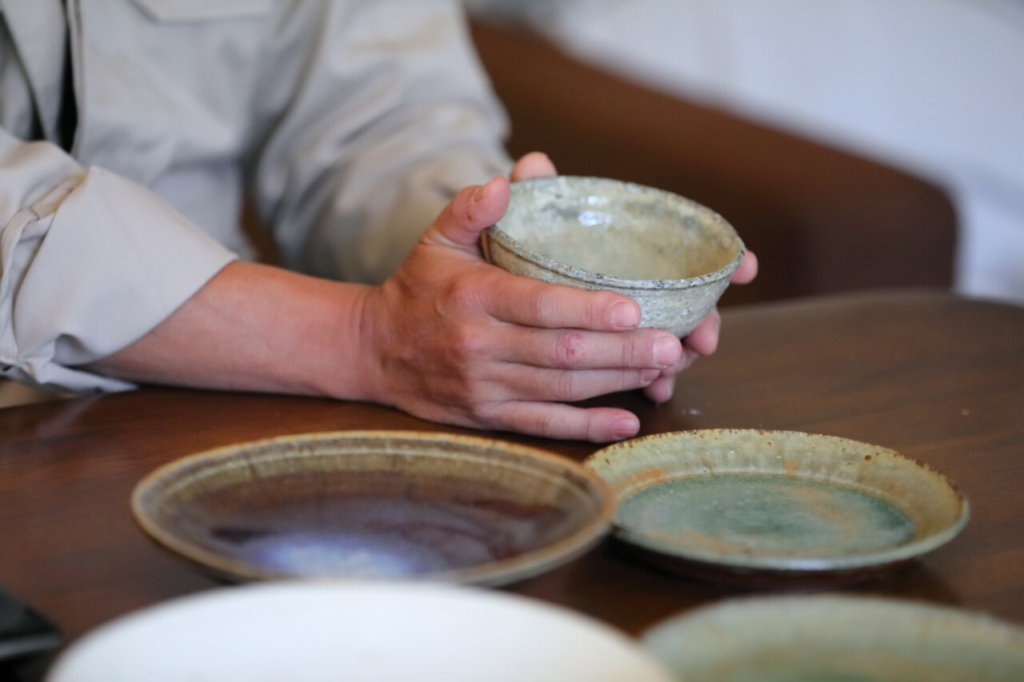
Tokoname and Seto are two of the most famous places in Aichi Prefecture when it comes to ceramics. Tokoname Pottery is one of the six oldest kilns in Japan and is made mainly on the Chita Peninsula in the southern part of Aichi Prefecture. Mr. Inoue, who was working at an ordinary company in such an area, became interested in pottery making when he participated in a pottery-making workshop out of curiosity. He was hooked on the fun of pottery making, and immediately began to study pottery on his own. However, he did not know anyone around him who knew anything about ceramics, and through trial and error, he had to think about how he could make the vessels he wanted to make.
Started by helping with firing in Tokoname while working for a company
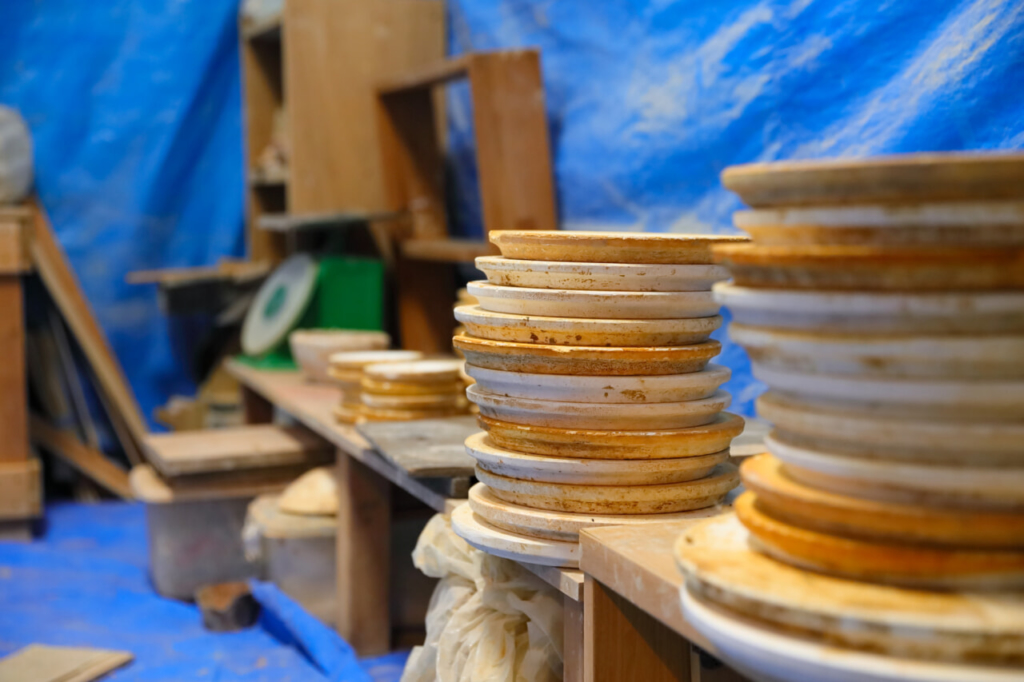
When he first started making ceramics, Inoue had no intention of quitting his corporate job. Looking back on his amateur days, he says, “I understood that ceramic works do not always sell even if they are made, and I knew that the world was not so naive that it would be possible for a person to make a piece of pottery just by making it on the spot.
Therefore, in addition to his work, he took time off to help with firing twice a year at a pottery class at the now-defunct Kyoei Kiln in Tokoname, and had his hobby pieces put together and fired in the kiln. Kyoei-gama was a kiln that mainly produced earthenware pipes of various sizes during the Meiji, Taisho, and Showa eras.
When he posted photos of his finished vessels on SNS, his followers gradually increased. Rumors began to spread that there was someone who was making unusual vessels, even though he was an amateur.
Fascinated by the joys of ceramics, he began his career as a potter.
While studying ceramics on his own, Mr. Inoue says he was particularly attracted to the natural and ash glazes of “Ko-Joname,” which were produced from the Heian to the middle of the Kamakura period. He repeatedly researched and experimented to find out what kind of firing method would produce the desired results, reading old documents and looking at old pottery shards to estimate the type of clay, firing method, and glaze, and became absorbed in pottery making.
While still working as an office worker, Inoue created pottery on his days off and in his spare time, when he received a request for an exhibition through a social networking service, his followers continued to increase. His SNS postings came in handy at the right time.
After that, a gallery in Nagoya heard about the response and asked him to hold a solo exhibition, which was well publicized in the media and attracted a rush of visitors. As a result, his employer became aware of his work, and this led him to make the choice to pursue a career in ceramics.
You learn because you’re self-taught and you’ve gone through it.
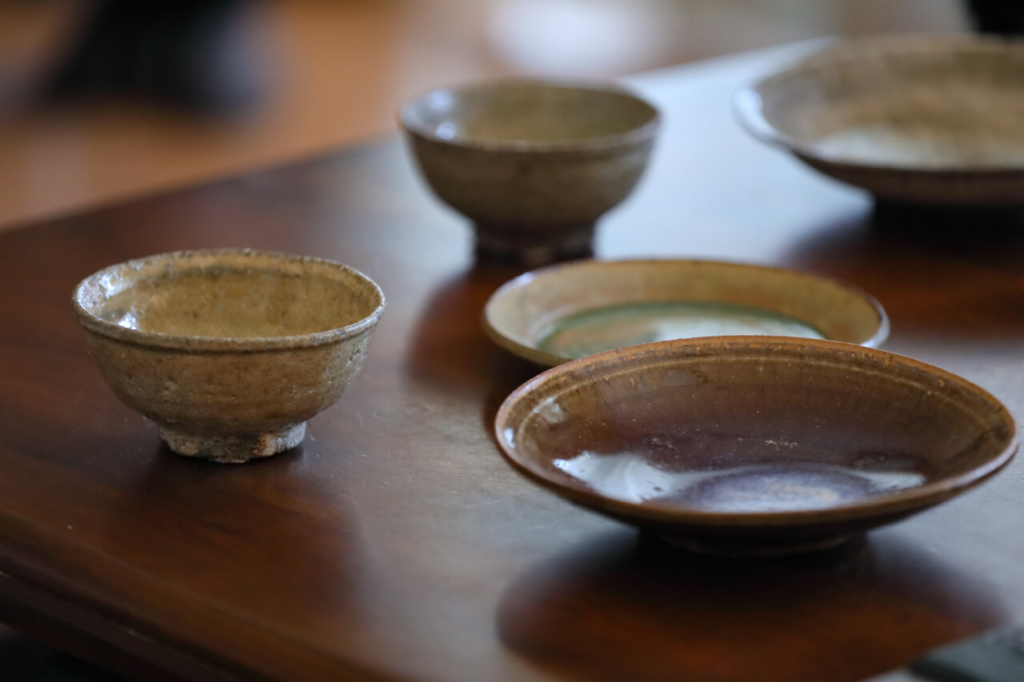
Looking back on the path he has taken so far, Inoue says, “I am glad that I was never taught. Although it is possible to learn the basic techniques of ceramics immediately by studying at an art school, it is also possible to get stuck in the “conventional wisdom” of ceramics. He has always been a “go-getter” when he is interested in something, and he has been researching, verifying, and building up his knowledge about pottery. Now, by looking at the clay, he is able to predict whether or not it is suitable for the piece he is looking for, and even what colors will be produced by the combination of glazes.
I want them to be used on a daily basis, so I am particular about their functionality.
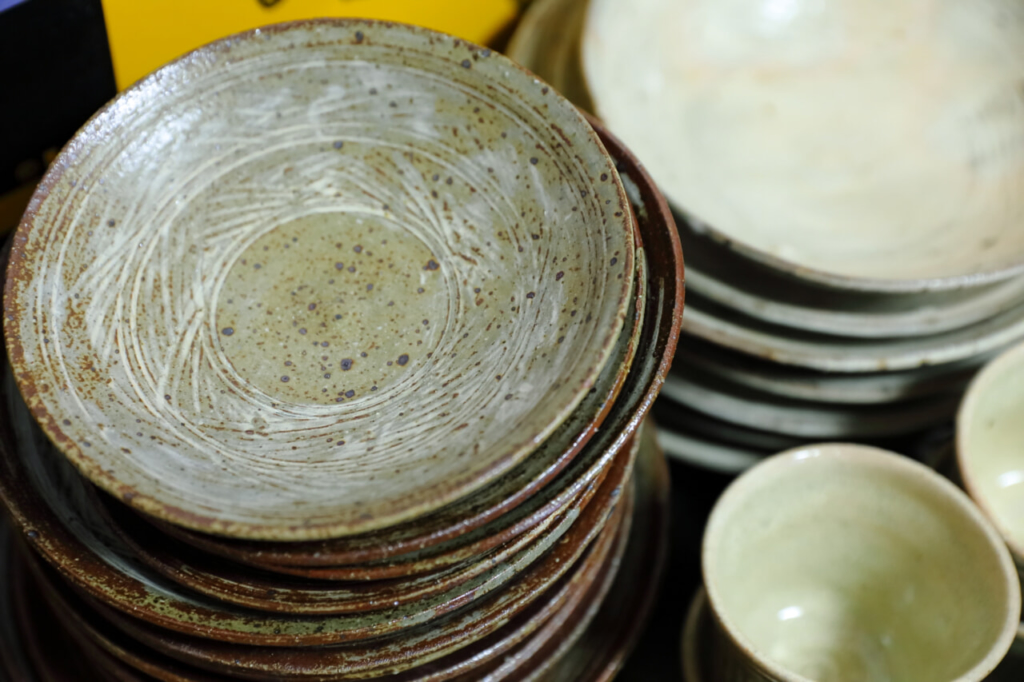
Inoue’s vessels are characterized by the clumpy texture of clay, sometimes mixed with sand. However, when you hold it in your hand, you will be surprised at its lightness, which you would not expect from its appearance. The lightness is one of the features that we have focused on for daily use. Although it is not possible to grind the rice on a wheel thinner than a grain of sand, we have made it as thin as we can without making a hole in it, making it a size and light enough for even a child to easily hold in his or her hand. If the rice bowl were heavy, it would be tiring. That’s why we often make mistakes when making them,” Inoue says with a laugh. Furthermore, by molding the bowl so that its center of gravity is low, a sense of stability is ensured when using it. Inoue creates his ceramics with the image of people naturally reaching for them when they eat everyday, rather than using them on special occasions with care.
Interesting and tasteful original soil
Commercially available potter’s clay has the advantage of being easy for anyone to handle, but Mr. Inoue has never used potter’s clay and uses only raw clay. Raw clay mined from the mountains contains many impurities that make it difficult to mold properly and cause cracks during firing. However, because of these impurities, each vessel has its own unique character, giving it a deeply appealing flavor. The clay cannot be overworked,” he says. It is difficult to grind on a potter’s wheel because of its lack of firmness. Conversely, I think that the shape that can be maintained on the potter’s wheel is what the clay wants to be, and the shape of a vessel that is natural and easy for the user to use,” says Inoue. For Inoue, who aims to create vessels for everyday use, the shortcomings of the clay also serve as a guideline when molding.
The romance of ash glaze: “What you think is what you get is more than what you get.
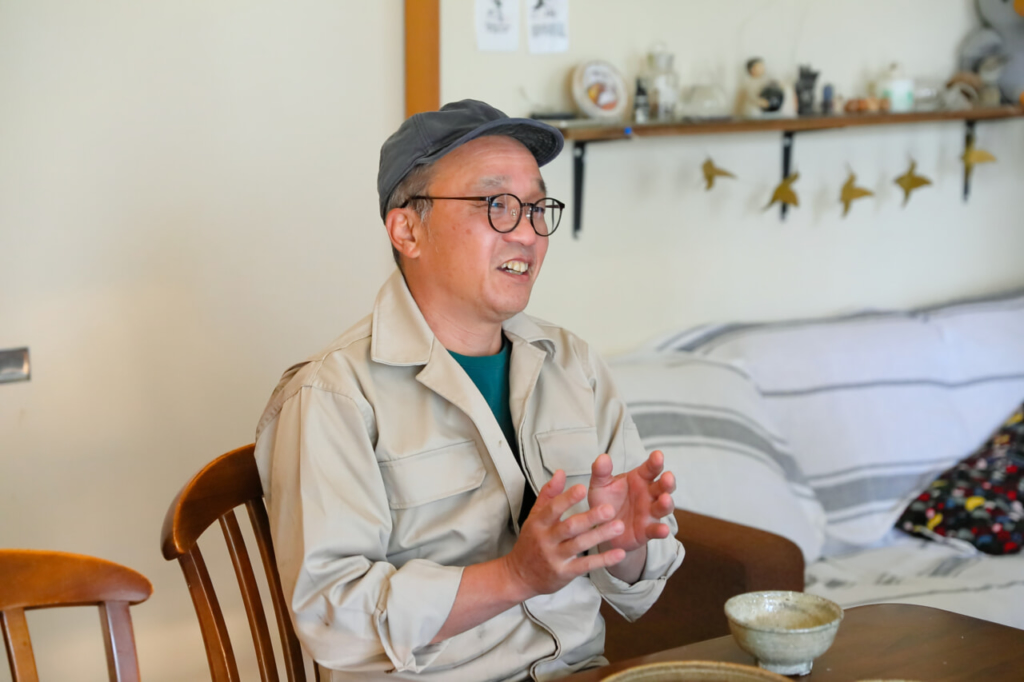
Mr. Inoue also finds the interesting aspect of glazes created by chance. If you use commercially available potter’s clay and glazes, you get the same color, black for manganese glaze and blue for cobalt glaze, no matter which kiln you use,” he says. I didn’t find that interesting. When I use ash glaze, which uses the ash of plants and trees as a solvent, the trace amount of metal in the ash causes a reaction that sometimes produces one or two unexpected vessels out of hundreds of pieces fired, which I find romantic. Some people say that it is fun to get what you are aiming for, but for me, it is a great feeling when I get something better than I aimed for,” he says. The excitement of wondering what he will have created when he opens the kiln is what motivates him to create even better pieces.
Each piece has a different expression, so it is fun to get lost in the process.
Inoue’s vessels are sold in more than 20 stores and galleries throughout Japan. When he visits galleries in between potteries, he is happy to see his customers confused in their choice of vessels. My vessels are different from each other, so people get confused. If it were a mass-produced product, you would just take the top off and that would be the end of it. Vessels with different expressions have their own merits and are compatible with the user. It may not be what I had in mind before I made it, but there are customers who really like it. It is a fun time to choose while hesitating. I am happy to be able to offer that kind of time,” says Inoue.
Incidentally, Mr. Inoue does not engrave inscriptions on the vessels he makes. The reason for this is that “the vessels are not mine, but the customers who buy them.
Not only ceramics, but any well-crafted piece can be used for a long time, and its color will change as it is used, and if treated with care, it will become a one-of-a-kind object. Perhaps it is because Mr. Inoue treats each piece of pottery not as a mere “object” but as a “partner of the user,” that it exudes humanity and warmth.
Because I love Japan, I want to spread the goodness of Japanese culture.
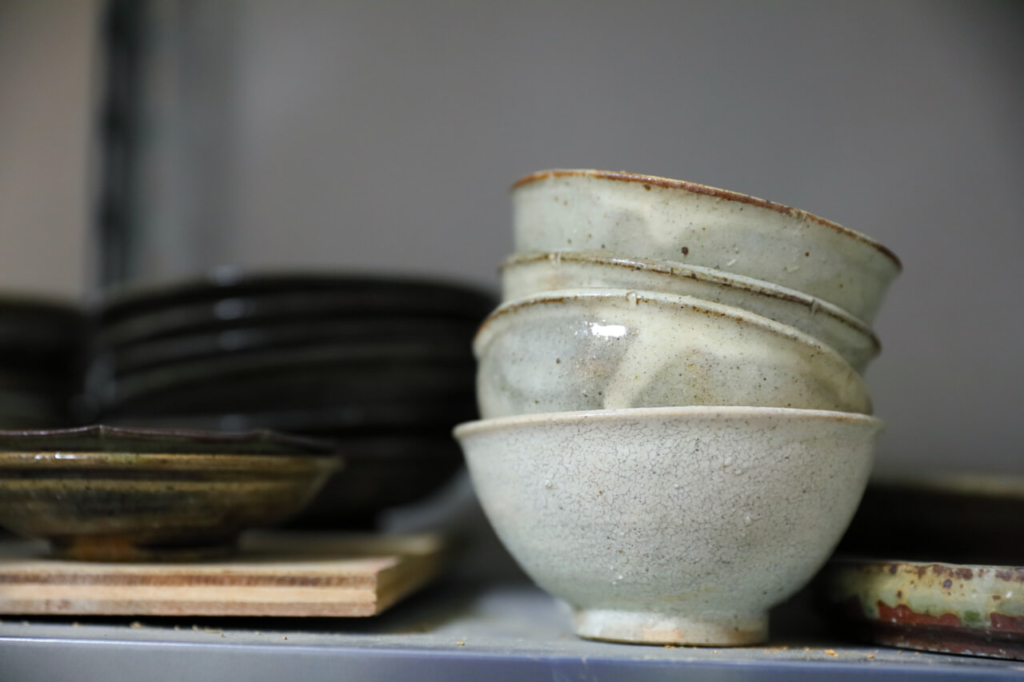
The Japanese diet has become much more Westernized, but rice bowls and Japanese tableware still play a leading role on the dinner table. They are attracting more and more attention overseas, and as a result, exhibitions are being planned to accept orders overseas, all in the hope of spreading the good qualities of Japan. At the same time, he aims to create “supreme tableware” that he believes “will never be made again” for people around the world to see. Mr. Inoue insists on using Japanese clay to create ceramics that have been handed down in Japan, because he wants to create moments when Japanese people can be proud of their own culture in their daily lives and feel happy to be Japanese. Mr. Inoue’s challenge to spread the goodness of Japanese culture throughout the world continues.



